
As you may already know, pool vehicles are one of the most cost-effective, environmentally friendly options to mobilise your people. But how do you ensure they get used properly, are accounted for, and maintained for longevity.
Here is our Top 10 Guide of tips and considerations for managing and operating a Pool Vehicle fleet.
1. BOOKINGS
Once you’ve decided on having a pool vehicle fleet, how do you ensure your pool vehicles are being used and allocated correctly amongst your organisation?
Key Points:
- Implement an online booking system
- Allow your drivers to self-service
- Define which vehicles should be used for each use case
- Make it easy to find and use the right vehicle
The first step would be to implement an online booking system that automates the whole reservation process and can handle multiple bookings without any conflicts. The great thing about an online booking system is the ability for your drivers to self-serve and manage their bookings to make any changes or cancel their booking so that other users can book the vehicle if it’s no longer needed. This all contributes to the overall efficiency and optimisation of your pool fleet.
Some more advanced features of an online pool vehicle booking system, would be things like recurring bookings that will allow your drivers to make repeated bookings easily and dynamic allocation that could cycle your least utilised vehicles to the top of the list.
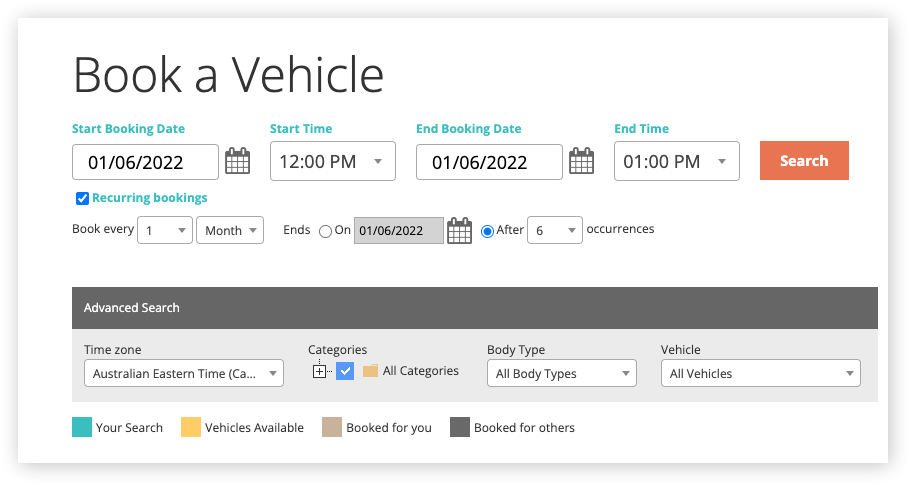
Example of LBM’s Online Vehicle Booking System with Recurring Bookings
You might also think about categorising your pool vehicles to restrict access to certain vehicles or setup options that will help when drivers are searching for specific requirements, like a child-seat or off-road capability. All these features will help your users find the right vehicle for their purpose easier.
2. KEYS & ACCESS
One of the important considerations for pool vehicles is how to manage and distribute the keys to ensure whoever needs access to a vehicle, can get it without any hassle. Here are 3 main options to consider, each with their pros and cons.
Key Points:
- Manage keys using existing personnel from security, reception, custodian or fleet coordinator
- Retrofit a keyless/swipe card entry system to all your vehicles
- Install a secured, self-serve key cabinet that integrates with your booking system
The first and most basic option is having the keys distributed manually by your organisation’s security office, reception, or fleet operations. If you have these resources available in your organisation already, then that’s a great start. You will need to consider how you will verify the person picking up the keys and what will happen after hours when there might not be anyone available to distribute the keys. The latter probably being one of the more challenging aspects of this method, especially in smaller or remote areas that may not be fully staffed.
The second option is retrofitting a keyless/swipe card entry system to your vehicles. Much like most security doors in offices or apartments, this involves each person using a plastic swipe card or key fob to unlock the vehicle and even turning on the ignition. This could be linked to their existing employee pass and also used as a method of identifying drivers who get behind the wheel. Swipe cards are a neat and streamlined solution, but there are some disadvantages too. The main disadvantage of this solution, being the cost of supplying and installing the swipe card readers into each of the vehicles as well as maintaining the system while in the field. There is also the inherit risk when overriding the central locking system or ignition, that can cause issues when trying to access the vehicle which can be awkward if it results in the fleet not being available while in the field.
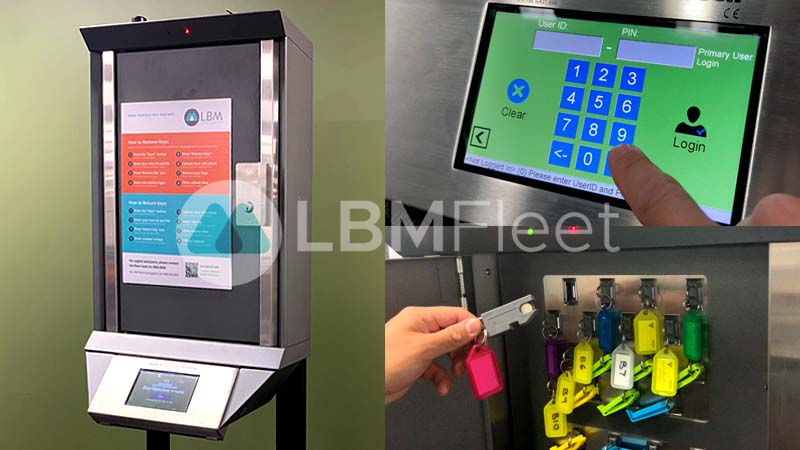
LBM’s Secure Key Cabinet is self-serve and can distribute keys via a UserID & PIN
The third option is a self-serve “vending” style key cabinet, where drivers can remove and return keys using their own PIN. Think of a small vending machine, combined with a secure, lockable safe, which can be freestanding or attached to a permanent fixture. The key cabinet allows for self-serve access at all hours and automates the whole authorisation and identification process with a User ID and PIN. You can take this one step further, like we’ve done at LBM and integrate this with your online bookings, so that users can only remove keys that are attached to their booking. The key advantage of this option is there is centralisation which makes it easier to maintain. The key cabinet will also facilitate the return of keys back into the cabinet, ready for the next driver!
3. BEFORE YOU DRIVE
Since Pool Vehicles don’t have an assigned owner, there is a tendency for them to be misused, damaged and not taken care of. How do you create a culture of care and responsibility for these vehicles, so that the next person who uses them also has a pleasant experience and will leave it in the same condition?
Key Points:
- Implement a Pre-drive Inspection routine for your Pool Vehicles
- Make this as easy and efficient for your drivers to do, not an obstacle
- Ensure the safety and compliance requirements are met
A Pre-drive Inspection is a regular routine you can implement for your vehicles to check for things like roadworthiness, condition, and safety. It can also be used as a checklist for specialised equipment such as fire extinguishers, tools or safety equipment that should be onboard and in working condition. This is becoming more and more paramount for fleet vehicles when we consider the safety of employees in the workplace environment, which also includes while they are driving.
At LBM, our Pre-drive Inspections functionality runs off our mobile app, so it can be done in the field and utilise the camera if photos need to be taken and uploaded. The person doing the inspection simply runs through the numerous yes/no questions with more information if required. It’s designed to be as simple as possible to complete and follow. We’ve made the customisation options in terms of setting up inspections and their schedules extremely flexible and comprehensive to handle the majority of scenarios.
In summary, having a routine inspection sets a standard for the condition of your pool vehicles and can encourage users of the vehicles to take care and responsibility when using them.
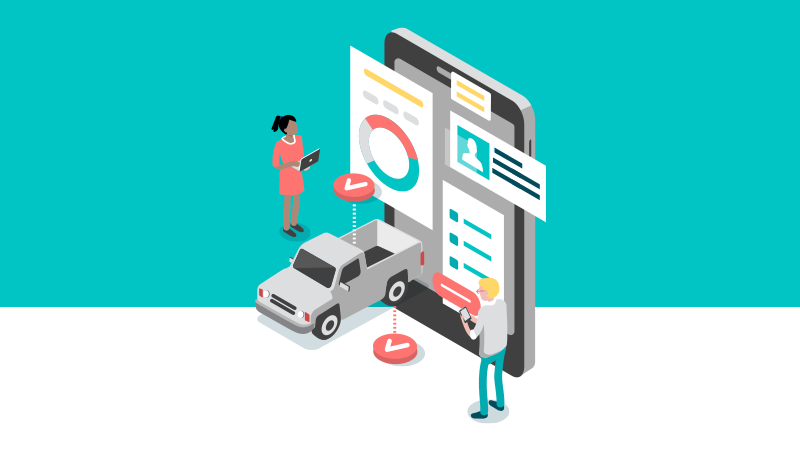
A Pre-drive Inspection routine for your Pool Vehicles sets a standard for the condition of your pool vehicles and ensures safety and roadworthiness.
4. MOBILITY
This concept of mobility allows people in your organisation to get to where they need to go or have the right vehicle for the job without having a huge, expensive fleet idle. They can be frequent or infrequent users of the pool fleet, and even from different offices, but at the same time have equal opportunities to use a pool vehicle that is fit for purpose.
Key Points:
- Having a Pool Vehicle fleet achieves greater mobility
- Allows infrequent drivers access to vehicles or specialised vehicles
- Reduce costs with less vehicles, but higher utilisation
Take for example, a person who is mainly based in the office, but occasionally travels to meetings or external sites. Where public transport may not be convenient or practical and a taxi/ride share will end up being too expensive, a pool vehicle is perfect for this scenario. Another example may be a person who does have an assigned vehicle for everyday work use but may be visiting a site that has unsealed roads and may require a fit for purpose off-road vehicle for better traction.
So, as you can see, mobility is about flexibility, availability and most importantly efficiency. Sharing vehicles reduces costs by having less vehicles and higher utilisation, whilst also providing a benefit to everyone in the organisation.
The future of mobility lies in sharing vehicles between different organisations who are in proximity of each other for maximum utilisation and choice of vehicles. This is something that LBM truly believes is the future of fleet and we’re already working with some organisations to develop and execute this concept. If this is something that interests you, we would love to get in touch and discuss this further with you.
5. RECORD KEEPING
Although pool vehicles are often not subject to FBT based on being only used for business use, by keeping a logbook you will gain valuable insights into knowing how your pool vehicles are being used, accountability and record of drivers, whether trips were for business or personal use as well as a range of insights, visibility, and data to manage your pool vehicles effectively.
Key Points:
- Good records, become a valuable source of data for optimisation and compliance
- Maintain correct usage of pool vehicles, by keeping logbooks
- Avoid using paper and utilise telematics/GPS for automated trip recording
Keeping a logbook is no stranger to fleet vehicles, as important as it is a compliance activity, the real benefits come from extracting valuable insights and trends from the data that can help you optimise and manage your fleet.
How much personal use is there, how long, or short are the trips, what time and how long are the vehicles being used for, are the types of questions that can be answered.
With the availability of telematics, automated GPS trip recording with OBD-II devices and electronic logbooks and apps, this makes record keeping a breeze. No more pieces of paper in the glovebox and an easy, user-friendly experience for your drivers. This is where we (LBM) started, and our electronic logbook remains as the market leader. We’ve been told this by customers who have used all the other telematics systems in the market and say that ours is the best by far. If you would like to find out for yourself, get in touch for a demo!
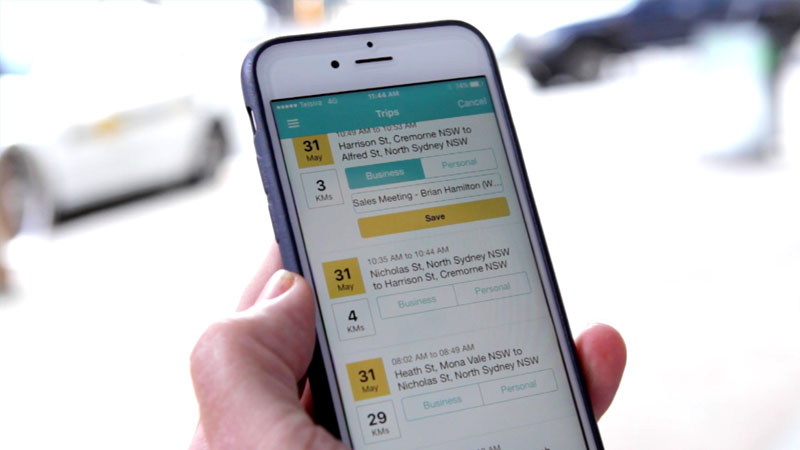
LBM’s mobile app automates alot of the manual logbook process using GPS and user-friendly AI features.
There’s more to record keeping than logbooks as well, your online booking system should give you some valuable insights and reporting into how bookings are being used. In LBM for example, we look at things such as, when a booking was made, but wasn’t used or if vehicles were returned early or late, all valuable insights for optimising and measuring the efficiency of your fleet and coaching your drivers.
6. DRIVER SAFETY
Driver Safety should be at the forefront of everybody’s mind any time they get behind the wheel, whether it’s their own vehicle or a pool vehicle. How can you ensure this happens and manage your liability? You may consider implementing regular driver training programs with reinforcement of policies, together with a practical driver behaviour monitoring system.
Key Points:
- Keep safety top of mind for anyone that’s driving
- Monitor and coach with driver behaviour monitoring
- Driver training programs and measurement of key outcomes
At LBM, we believe Driver Safety is about creating awareness of the factors that may contribute to unsafe driving. Driver behaviours such as speeding, hard cornering and driving for long periods can increase the risk of an incident, which is why we highlight these types of events in our scorecard to drivers, not to penalise, but to create awareness.
With regular monitoring, training, and awareness of Driver Safety you can create a culture of safe drivers, protect all road users, manage brand and reputation, and get everyone home safe.
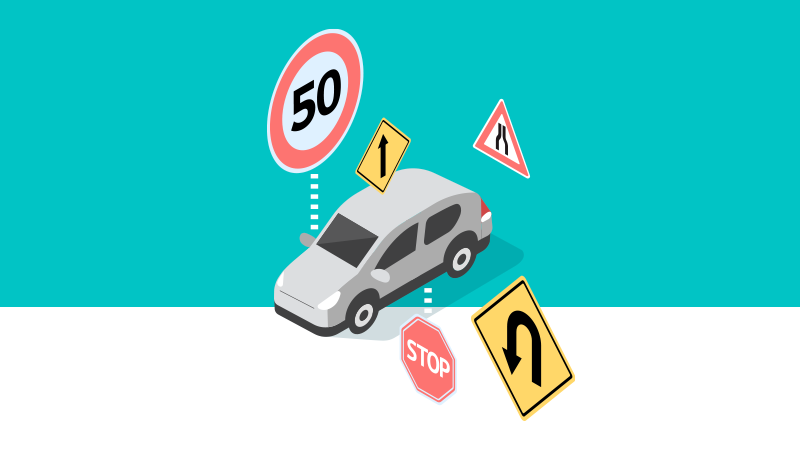
Driver Safety should be at the forefront of everybody’s mind, especially in Pool Vehicles.
7. ACCOUNTABILITY
We’ve touched on accountability indirectly in the previous points, but this is essentially about knowing who was driving the vehicle, were they using the vehicle for the intended purpose and did they leave it in a well-maintained state for the next driver.
Key Points:
- Encourage considerate use of bookings for others and availability
- Encourage good record keeping habits, the data will be invaluable
- Implement pre-drive inspections to maintain roadworthiness of vehicles
The first step to accountability, is ensuring that vehicles and bookings are used considerately of others. This means, not using vehicles without a booking, not unnecessarily booking vehicles for longer than they are needed and cancelling bookings if they no longer required. All this contributes to having true availability of your pool vehicle fleet for everyone to use and optimal utilisation.
The second step for accountability, is the record keeping component. Keeping good records, such as logbooks to identify drivers and the purpose of their journey can help to ensure that the pool vehicles are being used for their intended purpose and not being misused.
This information then becomes an invaluable resource to analyse the fleet for all sorts of applications, such as utilisation, optimisation and to make important data-driven decisions about your pool vehicle fleet.
Third, would be getting into a habit of doing pre-drive inspections, which in return would create awareness of the standards everyone should keep the vehicles in. It also gives the opportunity to report any issues that may require action before it is being driven again. Imagine how frustrating it would be for a vehicle you have booked to be low on fuel or have a flat tyre.
8. ANALYSE
Once you have all your pool vehicles up and running, and you have got your drivers booking vehicles, doing inspections, and filling out logbooks – you will want to start analysing how the pool fleet is being used and identify any opportunities for improvement.
Key Points:
- Analyse the usage of pool vehicles for optimal utilisation
- Analyse how bookings are being used to ensure fair and proper use

Analyse your data to uncover valuable insights and trends
The first thing you can look at is how much your vehicles are being driven, who is driving them and what they are being used for. You can use the logbook data to give you this information. Some things you may want to look out for – are some vehicles being used more than others? You may want to rotate vehicles to balance out the mileage budgets. Is there much personal use? Depending on your policy, personal use may be fine, but this can also have FBT implications.
Another thing to look at is the booking utilisation. This covers things such as bookings that were not used, or vehicles being driven without a booking, vehicles being returned late or used for longer than they were booked for. As we mentioned before, considerate use of pool vehicles will be key to your pool vehicle fleet’s success and ensuring everyone can have access to a vehicle when they need it.
LBM’s pool vehicle booking system has the unique benefit of being integrated with the vehicle’s logbook and trip data. When you can reconcile bookings and trips together, it can highlight valuable insights that can identify trends, exceptions or enable right-sizing of the fleet.
9. SERVICING & MAINTENANCE
Like with any vehicle, you will need to regularly service your pool vehicles to ensure vehicles are roadworthy and safe, especially since the vehicle will be driven by different people in different types of situations. Vehicles may also have higher usage than non-pool vehicles, that are assigned to a single driver, so they may require more frequent servicing or tyre changes.
Key Points:
- Real-time odometer readings with servicing reminders will notify you when a vehicle needs to be serviced
- Prevent excessive wear and tear by encouraging good driving behaviours and early detection of any issues using pre-drive inspections
You will want visibility over your servicing and maintenance schedules, including odometer readings and reminders when vehicles are due for service. LBM’s Servicing & Tyres functionality allows you to setup custom schedules and reminders for servicing, that checks against real-time odometer readings.
Some other factors, which can help with preventative maintenance of pool vehicles, are things like driving behaviour and pre-drive inspections. Driving behaviours such as hard cornering, sudden braking and acceleration can all contribute to more wear and tear, so raising awareness of some of these behaviours may help maintain the vehicles in better condition.
Implementing a Pre-Drive Inspection is a good way to be notified of any issues by drivers while they are in the field. With LBM’s Inspection functionality, you can setup severity levels for your pre-drive questions. If the severity is at the highest for that question, you can alert the driver that it should not be driven and use another vehicle.

Pool Vehicles may require more frequent servicing if they are driven more often
10. OPTIMISE
A common question that always get asked from our customers is, how many cars do we need? Do we have too many? Do we have enough? Do we have the right type of vehicles? How are they being used? Are they used a lot or hardly used at all?
Key Points
- ‘Right size’ forecasting tool to see how many vehicles you really need
- Rotate vehicles to reduce wear and tear
- Avoid excessive km charges for going over leasing budgets
The first step to answering this question is to gather some data. If you’ve been using an online booking system or telematics in your pool vehicles, the reporting should give you a bit of an idea about how often vehicles are booked and how much they are being driven.
At LBM, we’ve taken it a few steps further and built a ‘Right Size’ tool, which does all this analysis for you and can tell you exactly how many vehicles you need to meet the demand of your drivers. Then you can use it to forecast what would happen if your fleet size decreased or increased. Get in touch if you would like to see a demo of how this works.
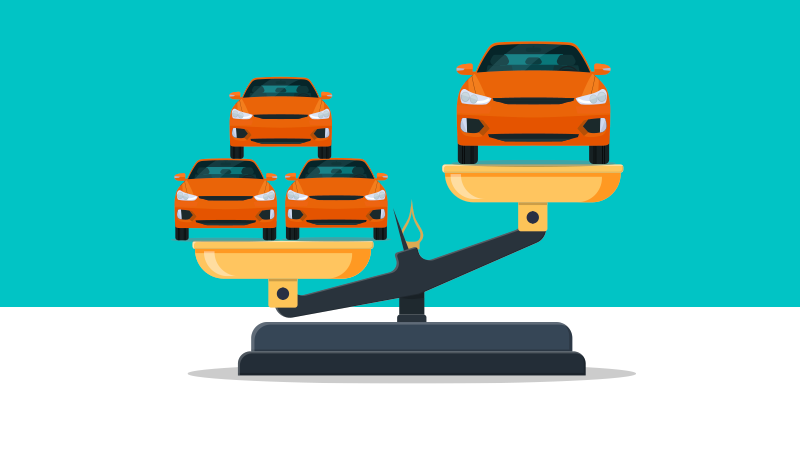
LBM has a forecasting tool designed especially for Pool Vehicles to “Right Size” your fleet.
Another way to optimise your fleet is to make the most of the vehicles you already have. You may find that some vehicles get used more often than others, for a variety of reasons. But ideally, what you can do is balance out your fleet by rotating vehicles that are being driven a lot, with similar vehicles that aren’t being driven as much. With telematics data or odometer readings, you can compare the mileage driven in a time period (e.g., a month) to highlight which vehicles are being driven the most. You may choose to temporarily take them off the booking system or only use them for short trips. The benefits of rotating vehicles are to reduce wear and tear, and if you are leasing, you can avoid being charged for excessive km’s defined in your budget.
Conclusion
There you go, that’s our Top 10 Guide to Pool Vehicles. We know that’s a lot to take in and we hope we got you thinking about some of these things.
LBM manages some of the largest pool fleets in the country. There’s a lot more we can share with you and our Customer Success team would also love to help you practically implement some of these processes and tools in your organisation. Our LBM Fleet software is designed to do most of the hard work for you around analysing data and either highlighting or reminding you what needs to be actioned.
Get in touch with our Customer Solutions team to view a demo or discuss your organisations requirements.

